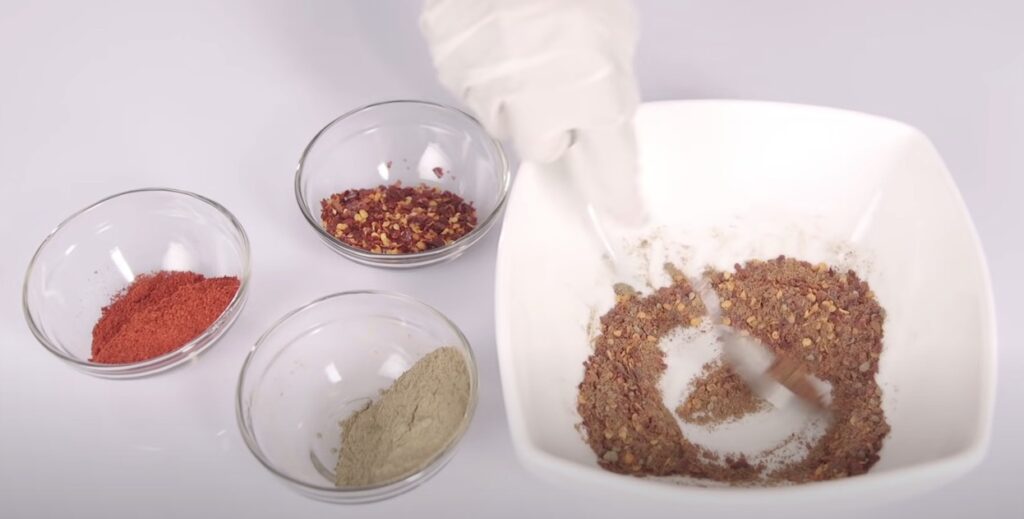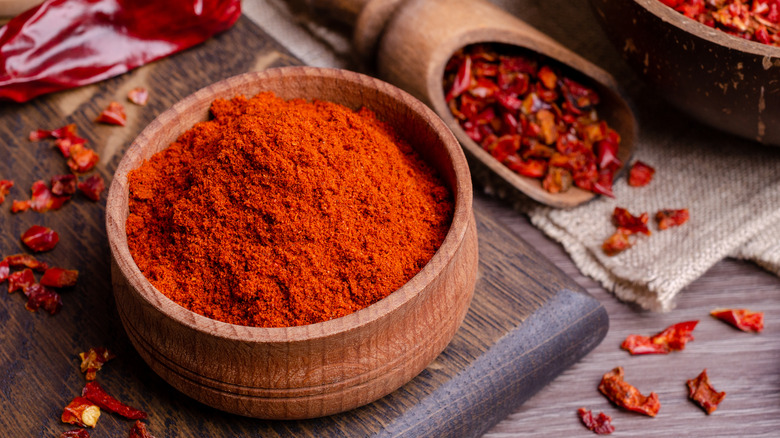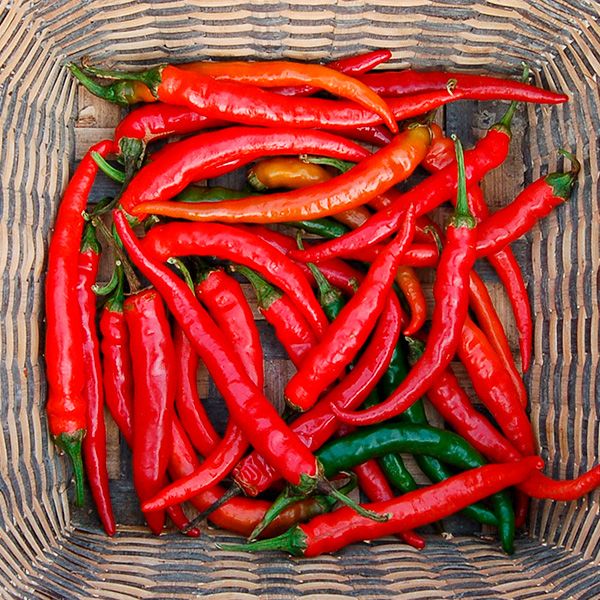Guard your space! DIY – How To Make Cayenne Pepper Spray for Raccoons – Your Ultimate Guide to Natural Pest Control. Learn the steps to keep those pesky raccoons away. 🌶️🦝
How To Make Cayenne Pepper Spray for Raccoons

What is Cayenne Pepper Spray?
– Cayenne pepper spray is a natural repellent.
– It’s crafted from a concentration of cayenne peppers mixed with water.
– The active ingredient is capsaicin, which causes a burning sensation.
– This repellent is non-toxic and eco-friendly, making it safe for use around homes and gardens.
– It’s commonly used as a deterrent for pests, including raccoons.
Why use Cayenne Pepper Spray for Raccoons?
– Raccoons are known to rummage through trash and invade private spaces.
– They can be carriers of diseases, which pose a health risk.
– Cayenne pepper spray effectively keeps raccoons at bay due to the intense irritation it causes them.
– It is an affordable and humane method to prevent raccoon encroachment without causing them significant harm.
– The spray can be frequently applied to areas of recurrence to maintain its effectiveness.
Preparing the Ingredients for Cayenne Pepper Spray

Gathering the necessary ingredients
– Purchase fresh cayenne peppers or cayenne pepper powder from a local grocery store or market.
– Ensure accessibility to clean water, which will be used to dilute the pepper concentration.
– Acquire a container or spray bottle for mixing and application purposes.
– Consider optional additives like a small amount of dish soap to help the spray adhere to surfaces.
Measuring and mixing the ingredients
– A typical recipe might include one tablespoon of cayenne pepper powder per two cups of water.
– If using fresh peppers, chop them finely before steeping in hot water to extract the capsaicin.
– Strain the mixture to remove any solid particles and to prevent clogging the spray nozzle.
– If adding dish soap, a few drops will suffice—mix thoroughly to ensure an even distribution of all ingredients.

Making the Cayenne Pepper Solution
Boiling the water
– The individual starts by boiling water to prepare it for the infusion of cayenne peppers.
– During the heating process, they make sure the water reaches a rolling boil for maximum extraction.
– Safety is emphasized as the person handles hot water carefully to avoid any burns or accidents.
Adding cayenne pepper and other ingredients
– After the water has boiled, the individual adds the cayenne pepper powder, measuring precisely for consistent potency.
– In cases using fresh peppers, they are put into the hot water, taking care that they are fully submerged for optimal infusion.
– The person then allows the mixture to cool if necessary before straining to keep the liquid free from solids.
– Finally, a few drops of dish soap are added and mixed in thoroughly, creating a solution that is easier to adhere to surfaces for lasting effect.
Straining and Cooling the Cayenne Pepper Spray
Straining the solution
– Once the infusion of cayenne pepper is complete, the individual proceeds to strain the mixture.
– They use a fine mesh strainer or cheesecloth to ensure no pepper solids remain in the liquid, which is critical for a smooth spray application.
– Care is taken to press out as much liquid as possible without wasting any of the potent solution.
Allowing the solution to cool down
– After straining, the solution needs time to cool to room temperature. This step is essential to avoid any risk of handling hot liquid and to prepare it for bottling.
– They ensure the environment is safe and free from contaminants, maintaining the purity of the solution.
– Cooling also helps to settle the ingredients, ensuring the cayenne pepper spray retains its strength and effectiveness when used.
Storing and Testing the Cayenne Pepper Spray

Transferring the solution into a spray bottle
– The cooled cayenne pepper solution is then carefully poured into a spray bottle, ideally one with a fine mist setting for an even distribution.
– Individuals performing this step take precautions to avoid contact with skin or eyes, as the capsaicin in the mixture can cause irritation.
– They also make sure the spray bottle is clean and dry beforehand to prevent any dilution or contamination of the pepper spray.
Testing the spray for effectiveness
– To ensure the cayenne pepper spray works as intended, a quick test spray is performed outside or in a well-ventilated area.
– The person stands upwind to avoid accidental exposure to the potent effects of the capsaicin.
– They observe the range and mist quality, adjusting the nozzle if necessary, to guarantee an optimal defense mechanism is ready for use.
Applying Cayenne Pepper Spray to Deter Raccoons
Identifying areas frequented by raccoons
– Gardeners and homeowners identify hotspots where raccoons are likely to be a nuisance, such as garbage bins, gardens, or compost areas.
– These individuals look for signs of raccoon activity, including overturned bins, scattered trash, and paw prints.
– It is crucial to concentrate the repellent application at these known entry points and routes that raccoons use to access the property.
Applying the spray to deter raccoons
– Once the targeted areas are identified, the cayenne pepper spray is applied generously around the perimeter and directly onto surfaces where raccoons might climb or touch.
– The potent odor and taste of capsaicin acts as a natural deterrent, discouraging raccoons from entering treated zones without harming them.- Users reapply the spray after heavy rain or at regular intervals to maintain its effectiveness, keeping persistent critters at bay.
Safety Measures and Considerations
Using gloves and protective gear
– Individuals are advised to wear gloves while handling the cayenne pepper spray to prevent skin irritation.
– Protective eyewear or a mask is recommended to avoid inhaling fumes, which can cause discomfort or respiratory irritation.-
Clothing that covers the skin can prevent accidental spray contact, which might result in a burning sensation due to capsaicin.
Keeping the spray out of reach of children and pets
– The cayenne pepper solution should be stored in a secure location to prevent accidental ingestion by children or animals.
– Pet owners should supervise their pets when in the vicinity of treated areas to avoid potential discomfort or harm.
– Warning signs or markers could be used to delineate sprayed areas, especially if children often play nearby or pets roam freely.

Alternative Methods to Deter Raccoons
Installing motion-activated deterrents
– Homeowners may consider the installation of motion-activated lights as a non-lethal method to scare away raccoons.
– Motion-activated sprinkler systems can also serve as an effective deterrent, spraying water when movement is detected.
– Ultrasonic repellents emit high-frequency sounds uncomfortable to raccoons but typically inaudible to humans and pets.
Sealing off potential entry points
– Examining homes for cracks or holes that raccoons could exploit as entryways is crucial; these should be promptly sealed.
– Chimneys should be capped, and vents should have screens installed to prevent raccoon intrusions.
– Ensuring lids on garbage cans are secure and that pet food is not left outside will eliminate food sources that attract raccoons.
Conclusion
Summary of the benefits and effectiveness of Cayenne Pepper Spray for raccoons:
Now you have become aware of how to make cayenne pepper spray for raccoons:
– Cayenne pepper spray serves as a natural, non-toxic deterrent, leveraging the discomfort raccoons experience from the capsaicin.
– It’s cost-effective and can be easily applied to gardens and areas where raccoons frequent.
– The pungent smell and taste create an unfavorable environment for raccoons, encouraging them to find a more welcoming area.
Helpful tips for successful raccoon deterrence
– Consistency in the application of deterrents is key to ensuring raccoons don’t return.
– Combine different methods for a more comprehensive approach to deterrence.
– Regularly inspect properties for new potential entry points or food sources that could attract raccoons.
– Consult with wildlife professionals for advice and assistance if raccoon activity persists.

